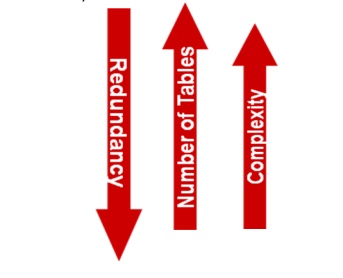Chapter: Database Management Systems : Introduction to DBMS
Database Normalization
Database Normalization
l
Database normalization is
the process of removing redundant data from your tables in to improve
storage efficiency, data integrity, and scalability.
l
In the relational model, methods
exist for quantifying how efficient a database is. These classifications are
called normal forms (or NF), and there are algorithms for
converting a given database between them.
l
Normalization generally involves
splitting existing tables into multiple ones, which must be re-joined or linked
each time a query is issued.
Levels of Normalization
•
Levels of normalization based on the
amount of redundancy in the database.
•
Various levels of normalization are:
– First
Normal Form (1NF)
– Second
Normal Form (2NF)
– Third
Normal Form (3NF)
– Boyce-Codd
Normal Form (BCNF)
– Fourth
Normal Form (4NF)
– Fifth
Normal Form (5NF)
– Domain Key
Normal Form (DKNF)

Most
databases should be 3NF or BCNF in order to avoid the database anomalies.
Related Topics